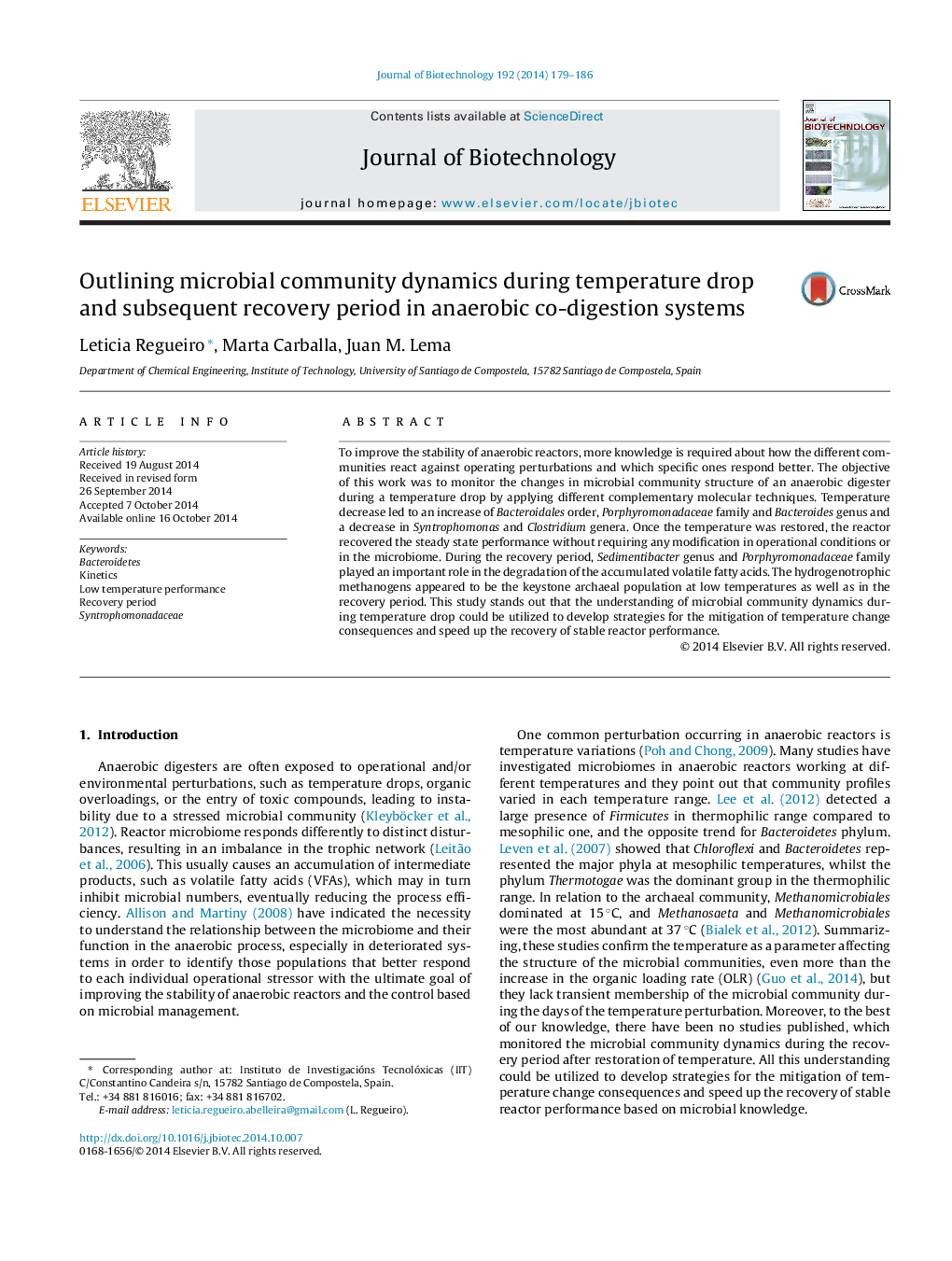| Article ID | Journal | Published Year | Pages | File Type |
|---|---|---|---|---|
| 6491337 | Journal of Biotechnology | 2014 | 8 Pages |
Abstract
To improve the stability of anaerobic reactors, more knowledge is required about how the different communities react against operating perturbations and which specific ones respond better. The objective of this work was to monitor the changes in microbial community structure of an anaerobic digester during a temperature drop by applying different complementary molecular techniques. Temperature decrease led to an increase of Bacteroidales order, Porphyromonadaceae family and Bacteroides genus and a decrease in Syntrophomonas and Clostridium genera. Once the temperature was restored, the reactor recovered the steady state performance without requiring any modification in operational conditions or in the microbiome. During the recovery period, Sedimentibacter genus and Porphyromonadaceae family played an important role in the degradation of the accumulated volatile fatty acids. The hydrogenotrophic methanogens appeared to be the keystone archaeal population at low temperatures as well as in the recovery period. This study stands out that the understanding of microbial community dynamics during temperature drop could be utilized to develop strategies for the mitigation of temperature change consequences and speed up the recovery of stable reactor performance.
Related Topics
Physical Sciences and Engineering
Chemical Engineering
Bioengineering
Authors
Leticia Regueiro, Marta Carballa, Juan M. Lema,
